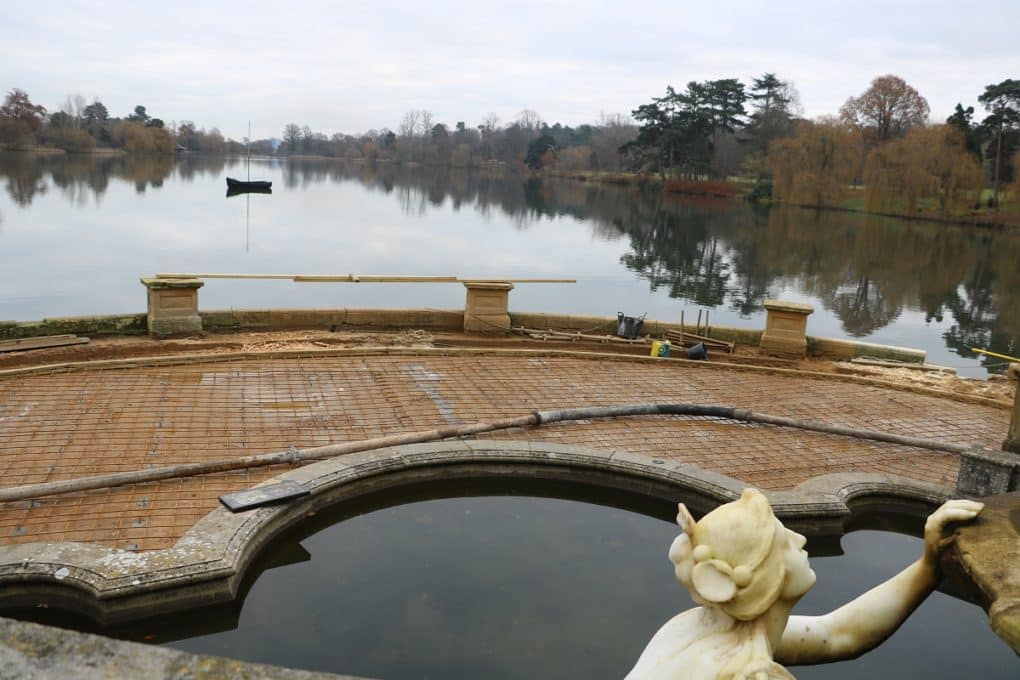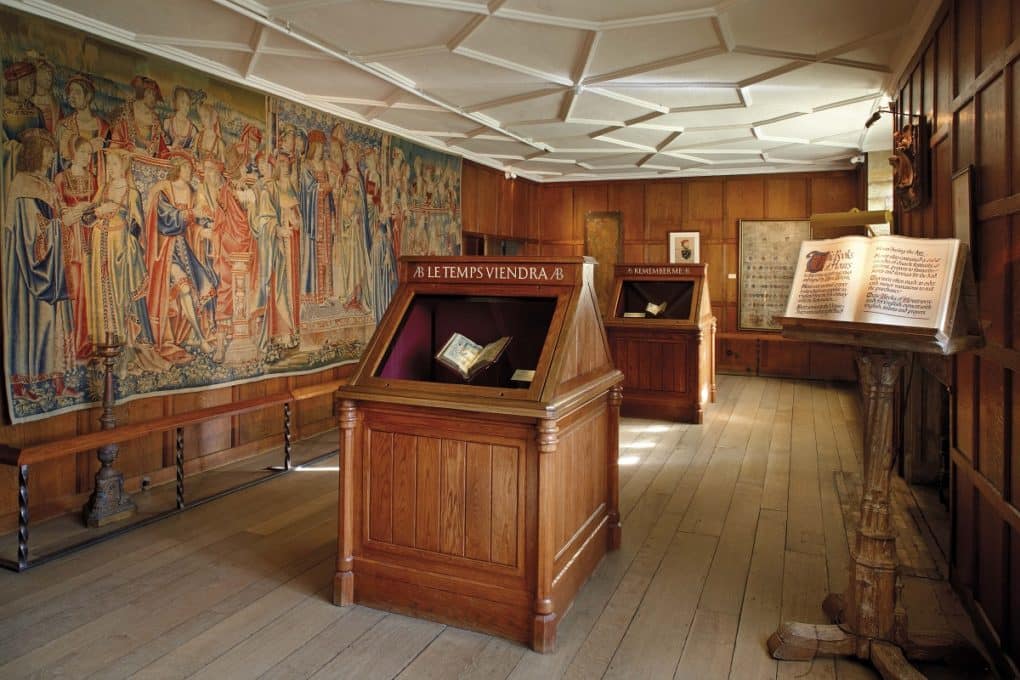

The theme for this weeks’s #TudorTuesdays with Historic Houses is restoration.
This week we look back at some of the restoration which has taken place at Hever Castle over recent years.
Current work
Restoration work is currently taking place on one of the rotundas in the Italian Garden as it was leaning over. Work started in November 2019 and is expected to be complete at the end of September. The restoration has seen the rotunda rebuilt using as much of the existing stone as possible with a few stones replaced. A new copper roof is also being added as part of the works being carried out by Brickstone and Flint Ltd.
Italian Garden
The restoration work is part of ongoing maintenance work in the Italian Garden which have included relaying the areas of stone around Half Moon Pond and relaying paving on Pergola Walk.
In 2017 and 2018 major repair and restoration work also took place on the terrace of the Loggia to preserve the stone structure for future generations.
The Loggia area with its Nymph’s Fountain inspired by the Trevi Fountain in Rome is over 100 years old and is one of the highlights of the Italian Garden which was built to house former owner William Waldorf Astor’s sculpture collection.
The stone structure with its imposing columns was built on a river plain and over the years it had suffered from subsidence and tree roots and weeds getting into the walls.
The restoration works saw the wall on the lower terrace taken down and all the paving stones on the surface removed and each individual stone catalogued to ensure they were put back in the same place.
Any cracked paving was repaired and replaced and reinforced concrete was laid before the stones were relaid and the wall rebuilt.
The restoration work, which was completed in April 2018, meant that the lower terraces now drain properly as it had occasionally flooded in the winter.
Sunken Garden
Other restoration works in the grounds include a bronze statue nicknamed Morgante in the Sunken Garden which needed repairs after falling into the pond.
Hever Castle worked with Hall Conservation who cleaned, repaired and re-gilded the Morgante statue after it became submerged in the water.
The water feature dates back to 17th/18th century and depicts Court Dwarf Morgante who was the court dwarf of Cosimo I de’ Medicini, the duke of Florence and Grand Duke of Tuscany.
The sculpture is moulded after the image of Morgante riding on a dragon by Italian artist, Giambologna.
Experts from Hall Conservation manually cleaned the Morgante statue to remove dirt and corrosion as well as repairing the back body of the dragon and the fish’s mouth.
The inner piping of the Morgante statue was cleaned out and new piping installed to ensure he could work again as a water feature.
Then the Morgante sculpture was prepared, primed and painted before being gilded to shine once more.

Inside the Castle
Restoration works in the Castle includes conservation of the 16th marriage tapestry by The Textile Conservancy Company.
The tapestry, in the Book of Hours room, dates back to c.1525 and has lived at Hever Castle since Astor purchased it through his agent Partridge in the early 20th century for 70,000 franks.
The tapestry illustrates a historic event: the marriage of King Henry VIII’s younger sister, Princess Mary Rose Tudor to King Louis XII of France. The union was political and understandably, the twenty-year old royal was reluctant to marry a man over thirty years her senior. However, Princess Mary Rose dutifully agreed to the match on condition that should she outlive the French monarch she could choose her new husband, namely Charles Brandon, Duke of Suffolk – a close friend of Henry.
Princess Mary’s marriage to King Louis was short-lived as he died just three months later, allowing her to marry Charles Brandon.
The tapestry is of historic importance as the woman to the right of Princess Mary Rose is supposedly Anne Boleyn – it is known that she and her sister Mary were present at the French Court at the time of the wedding in October 1514.
Astor was the originator of restoration works on the Castle. In September 1903 work started on the repairs and restoration of the castle, using 748 men to carry out the work.
The workmen were not allowed to use modern planes, only the adze and the chisel. Between 1903 and 1908 Astor set about the restoration of the Castle, construction of the Astor Wing and creation of the Lake and gardens.
If you enjoyed this item on restoration why not discover the previous #TudorTuesdays news items:
• Great Halls
• Books and Libraries
• Film and TV sets
• Elizabeth I
• Tudor Chapels
• Tudor Windows
• Tudor Tapestries
• Tudor Chimneys
• Tudor Panelling
• Tudor Knot Gardens
• Tudor Childhood
• Tudor Dining Rooms
• Tudor Rose Gardens
• Henry VII
• Henry VIII
• Mary I
Book your visit to Hever Castle & Gardens.
Within the grounds of the Hever Castle Estate, there are two opportunities for you to stay the night with us.
Hever Castle has played host to many important events and celebrations for over 600 years. In 1903 when William Waldorf Astor set about restoring Hever Castle to its former glory, he added the Astor Wing, to accommodate his family and guests, before creating a lake and the spectacular Italian Garden to house his impressive collection of ancient Greek and Roman statuary.
There are multiple places to eat & drink across the Hever Castle Estate. Select between the Castle & Gardens and Golf Club below to discover more.
Set in the mature grounds of the Hever Castle Estate, Hever Castle Golf Club is a 27 hole Kent golf course that will encourage and inspire all golf enthusiasts.
Set in the mature grounds of the Hever Castle Estate, the Wellbeing Centre consists of five smart treatment rooms.